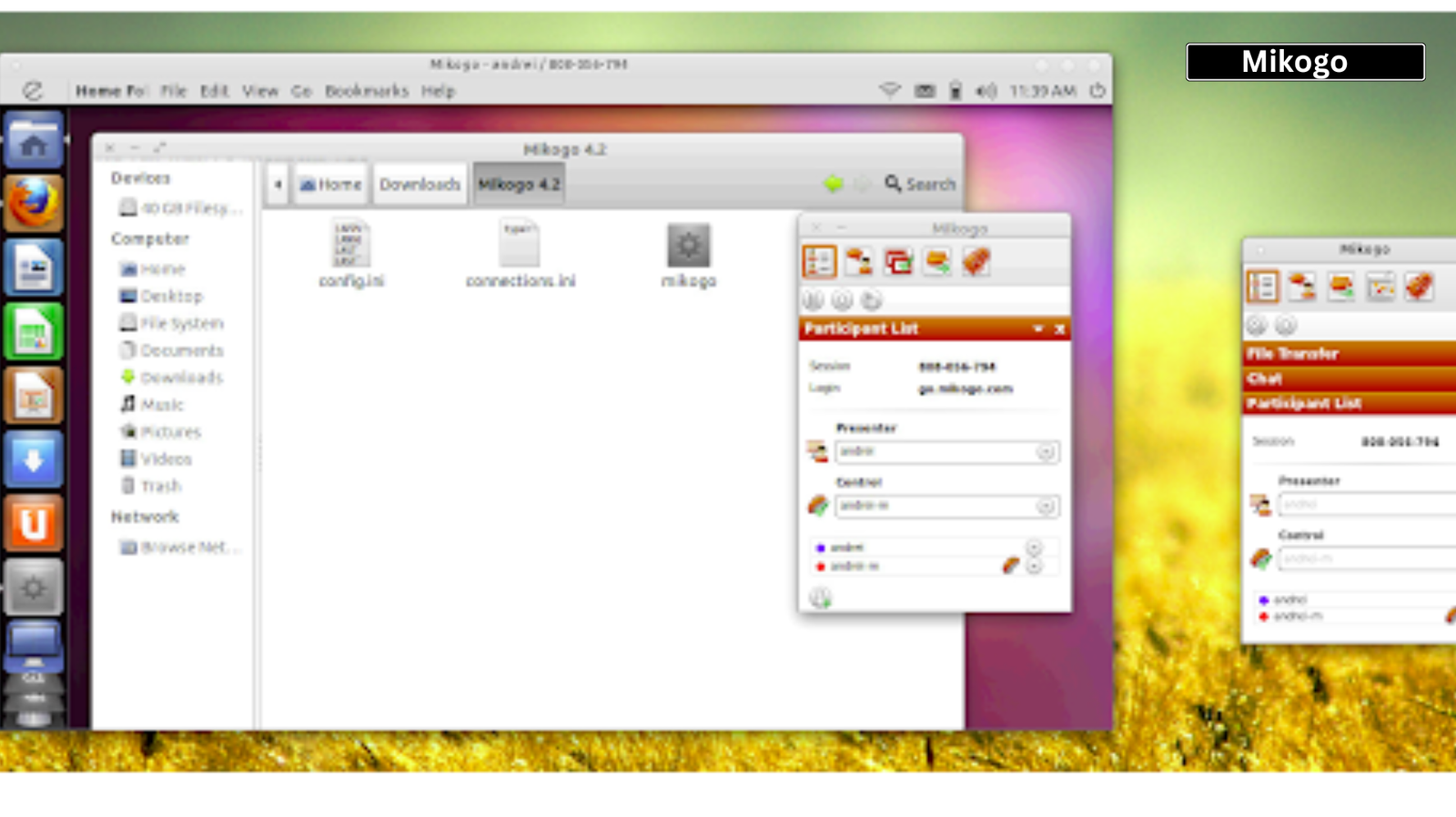In an era where remote work has become the norm rather than the exception, screen sharing software is not just a tool—it’s the backbone of modern collaboration. The ability to instantly share screens, whether for presentations, troubleshooting, or collaborative tasks, has transformed the way teams communicate. As businesses continue to operate across time zones and borders, screen sharing software in 2024 has reached new heights in terms of features, security, and accessibility. This evolution reflects the growing demand for real-time collaboration in an increasingly digital world.
Overview of Why Screen Sharing is Essential for Businesses and Teams
For businesses of all sizes, the need for efficient communication is paramount. Screen sharing allows teams to work together as though they were in the same room, regardless of their physical location. Whether it’s a startup brainstorming new ideas or a global corporation presenting quarterly reports, screen sharing eliminates the barriers of distance. It provides a visual aid that enhances understanding, speeds up decision-making, and fosters a more collaborative work culture. In this context, screen sharing tools become indispensable for modern teams, driving both productivity and engagement.
Evolution of Screen Sharing Tools in the Last Decade
The last decade has seen a remarkable transformation in screen sharing technology. What started as a basic feature within video conferencing tools has now evolved into robust, standalone platforms. Early iterations were plagued by lag, low video quality, and limited functionality, but today’s tools offer seamless, high-definition sharing with advanced features like real-time annotations and integrations with other collaboration tools. As internet infrastructure has improved globally, so too have the capabilities of these platforms, making screen sharing more reliable and feature-rich than ever.
Key Criteria for Comparing Screen Sharing Software
When comparing screen sharing tools, performance is key. Speed and reliability ensure that meetings run smoothly without frustrating delays or crashes. Usability speaks to how intuitive the software is; users should be able to share their screens with just a few clicks, without requiring technical expertise. High-performance tools keep the focus on the content being shared rather than the mechanics of the platform.
- Security: Data Protection and Encryption Standards: Security has become a top concern as businesses handle sensitive information through virtual meetings. The best screen sharing software employs advanced encryption standards, ensuring that data shared during a session remains secure. In 2024, businesses should prioritize tools that offer end-to-end encryption, user authentication, and the ability to control access to shared content.
- Compatibility: Platforms and Devices Supported: In today’s diverse work environment, teams operate on a variety of devices—Windows, macOS, Android, iOS, and more. The ideal screen sharing software should offer cross-platform compatibility, allowing users to join meetings and share screens from any device without technical hiccups. This flexibility ensures that all team members, regardless of their preferred operating system, can participate fully.
- Pricing: Free vs. Premium Options: Price is always a key consideration when choosing software. Many platforms offer free versions with limited features, as well as premium versions with advanced capabilities. Businesses must weigh the cost against the features they need—while free tools may be sufficient for smaller teams or occasional use, premium options often provide better security, customer support, and advanced features.
- Customer Support: Even the best software can encounter issues. When problems arise, having access to responsive customer support is crucial. The top screen sharing tools offer 24/7 support through various channels, including live chat, email, and phone. Businesses should look for providers that offer comprehensive support, especially if they rely on screen sharing for critical operations.
Top Screen Sharing Software Overview for 2024
2024 is shaping up to be a competitive year for screen sharing software, with numerous platforms for the top spot. From industry giants like Zoom and Microsoft Teams to specialized tools like GoToMeeting and TeamViewer, businesses have more options than ever before. Each platform brings its own unique set of features, making it crucial for users to understand what sets them apart.
What Sets These Platforms Apart from the Rest?
While many screen sharing software offer similar core features, the differences often lie in the details. Some platforms focus on ease of use and seamless integration, while others prioritize security or scalability. Understanding these nuances can help businesses choose the right tool for their specific needs.
Google Hangouts

Features: Google Hangouts provides a straightforward way to connect with others through instant messaging, voice, and video calls. Users can easily initiate group conversations, make quick one-on-one calls, or join meetings with multiple participants. One of its standout features is its seamless integration with Google’s other services, such as Google Calendar, Gmail, and Google Drive. This makes scheduling and collaborating on documents or presentations effortless. Additionally, users can share their screens during calls, making it ideal for presentations or troubleshooting. Google Hangouts is also available on both desktop and mobile platforms, allowing flexibility on how and where you connect.
Rating: 4/5
Usage: Google Hangouts is particularly popular among small businesses, educational institutions, and casual users. It’s commonly used by teams already working within the Google ecosystem, as its integration with Google Workspace makes collaboration easy. Whether you’re in a personal video chat or a virtual business meeting, Hangouts provides the tools needed for effective communication. It’s also useful for informal catch-ups with friends and family.
Pricing: Google Hangouts screen sharing software is free for personal use, offering essential features like messaging and video calls at no cost. For business users, upgrading to Google Workspace starts at $6 per user per month, which unlocks advanced features such as increased storage, larger group meetings, and enhanced security options.
Advantages: Google Hangouts stands out due to its ease of use and smooth integration with other Google services, making it a great choice for users who are already familiar with the Google ecosystem. It requires minimal setup and is very reliable for small teams, casual use, or businesses that don’t require advanced features like webinar hosting.
Mikogo

Features: Mikogo offers a comprehensive suite of features tailored for online meetings, screen sharing, and remote collaboration. The platform allows for up to 25 participants in a session, making it suitable for team meetings, virtual presentations, and remote troubleshooting. Users can share their screens, give others remote desktop control, and even record meetings for future reference. Another handy feature is its cross-platform compatibility, allowing users on Windows, macOS, iOS, and Android to join meetings effortlessly. Additionally, Mikogo offers session scheduling, file transfer capabilities, and multi-monitor support, which is ideal for complex presentations.
Rating: 3.8/5
Usage: Mikogo is widely used by businesses for virtual meetings, remote support, and team collaboration. It’s particularly useful for companies that need secure, high-quality screen sharing or want to provide remote IT support. Its user-friendly interface makes it accessible for non-technical users while still offering the advanced features needed by IT professionals and corporate teams.
Pricing: Mikogo is free for personal use, which includes limited features. For businesses and advanced users, paid plans start at $14 per month, offering more participants, better performance, and added features like meeting recording, remote control, and higher security.
Advantages: Mikogo excels in offering a reliable and simple-to-use platform for screen sharing and online meetings. Its versatility across devices and operating systems ensures that businesses of all sizes can benefit from its tools, making it a great option for small to medium-sized businesses or tech support teams.
Ditto

Features: Ditto is a specialized tool that focuses on wireless screen mirroring. It enables users to wirelessly display their screen on another device without the need for any cables or adapters. This makes it incredibly convenient for those who need to share content quickly in meetings, classrooms, or presentations. Ditto is compatible with a wide range of devices, including Windows, macOS, iOS, and Android, so users can mirror their screens across different platforms seamlessly. This cross-compatibility ensures that no one is left out of the conversation, regardless of what device they’re using. Ditto also allows for multiple users to mirror their screens simultaneously, which can be useful in collaborative environments or brainstorming sessions.
Rating: 4.2/5
Usage: Ditto is primarily used in business settings, classrooms, and conferences, where the need to share screens wirelessly is essential. Whether it’s a teacher projecting their screen to a classroom of students or a presenter sharing their laptop screen with a boardroom of executives, Ditto provides a quick and efficient way to share content without the use of cables. It’s particularly useful in environments that rely heavily on presentations, collaborative work, and large displays.
Pricing: The pricing for Ditto starts at $150 per year per room for business use. Educational institutions can benefit from special pricing at $30 per year per room, making it more accessible for schools and universities.
Advantages: One of Ditto’s biggest advantages is its ease of use. There’s no need for additional hardware, which makes setup simple and clutter-free. Its wireless screen mirroring capabilities are a huge time-saver, and its ability to support multiple devices at once makes it a valuable tool for collaborative environments. This flexibility is key in dynamic settings like classrooms, meetings, and conferences.
Surfly

Features: Surfly is known for its co-browsing feature, which allows users to browse the web together in real time without the need for any software downloads. It also offers video chat, screen sharing, and remote control capabilities, making it a versatile tool for customer support, sales teams, and collaborative work environments. Surfly’s co-browsing tool is especially useful for guiding users through websites, filling out forms, or navigating complex online services. The platform also ensures that all sensitive information is hidden during co-browsing, offering a secure browsing experience for both parties.
Rating: 4.3/5
Usage: Surfly is primarily used by businesses in customer support and sales. Its co-browsing feature allows customer service representatives to assist users in real time, guiding them through processes without taking full control of their devices. This makes it a popular choice for companies that need to provide hands-on support or interactive sales experiences. It is also widely used by remote teams looking for secure, easy-to-use screen sharing solutions.
Pricing: Surfly’s pricing is custom-based, typically starting around $100 per user per month, depending on the specific needs of the business. This flexible pricing model allows companies to scale their usage according to their requirements.
Advantages: Surfly’s co-browsing feature is its biggest selling point, providing businesses with a unique way to engage customers. Unlike other screen sharing software, Surfly doesn’t require any downloads or installations, making it extremely user-friendly. Its security features, like data masking and end-to-end encryption, make it a trustworthy option for industries where sensitive information is frequently handled, such as banking or healthcare.
For more information visit our software section.







